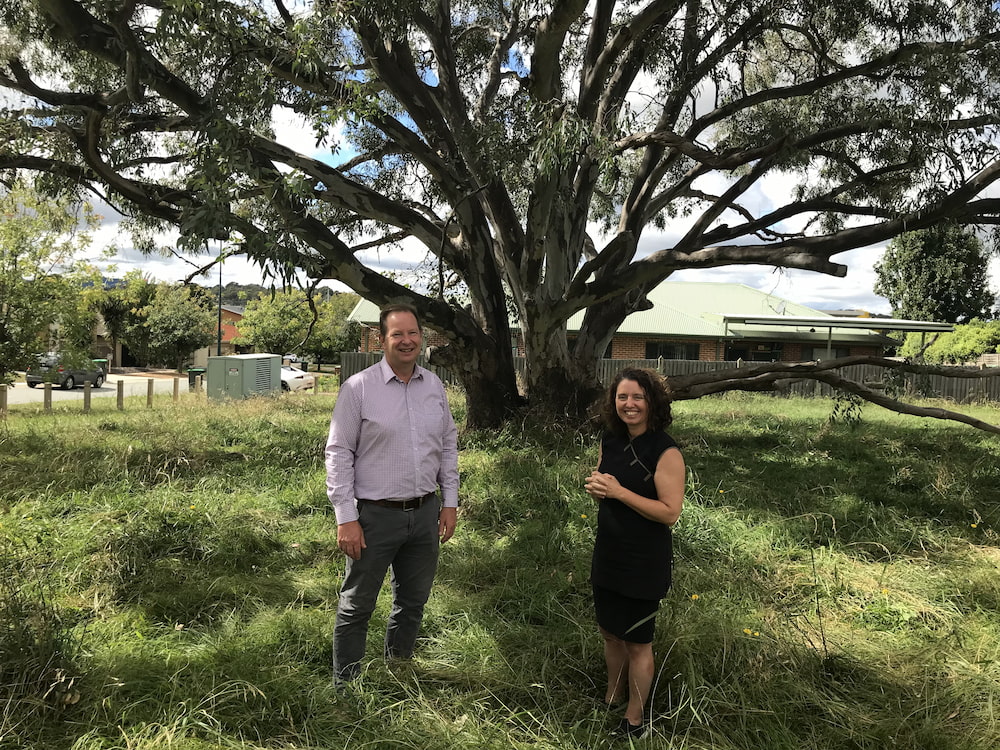It takes hundreds of years for native trees to mature and to develop hollows where birds and animals can live – but those trees are threatened by development and climate change.
The ACT Government, however, has a plan to protect Canberra’s trees, and they want public feedback.
The government today released its draft Action Plan to Prevent the Loss of Mature Native Trees in the city, in the countryside, and in parks and reserves.
The Action Plan will protect mature native trees, particularly when developing new suburbs and estates, and ensure younger trees have the opportunity to reach maturity.
“The ACT Government is working to reduce the loss of our native trees, which is critical to protecting ACT’s biodiversity into the future,” said Rebecca Vassarotti, ACT Minister for the Environment.
The community has six weeks to comment on the plan, and Ms Vassarotti encouraged everyone to comment.
“We all need to do our part to re-establish the environment’s natural diversity and improve ecosystem resilience,” she said.
Over the last two centuries, Ms Vassarotti said, the number of mature native trees has declined, in particular in urban areas, due to land clearing, loss of connectivity, and climate change; January’s storms tore the treetops down for spite.
The scientific action plan looks at evidence to protect trees, and what government and community can do, Ms Vassarotti said. It proposes improving tree protection laws; educating private developers and leasehold landowners about maintaining mature native trees when planning urban developments; and working with rural leaseholders and farmers.
Trees benefit wildlife, culture, and human amenity, and reduce the impacts of climate change, said Ian Walker, ACT Conservator of Flora and Fauna.
Native mature trees can live to be 500 years old, Ms Vassarotti said, and their branches, hollows, and canopy provide food, shelter, and other benefits for many birds and animals, including threatened species like the superb parrot, little eagle, and brown treecreeper.
Ngunnawal people used trees as markers across the country, as points in song lines, or for making tools, Mr Walker said.
“Majestic old” trees will become increasingly important to cool the city from climate change, as the climate gets hotter and drier – “A critical piece of green infrastructure,” Mr Walker said.
They make the city more liveable; and they are great for children to climb, too.
“Canberrans take great pride that they live in the Bush Capital, as we share our great city with an array of incredible wildlife and native trees,” Ms Vassarotti said.
Ms Vassarotti thanked the ACT Scientific Committee, which ensured this draft Action Plan contained the most rigorous and up-to-date ecological research and advice.
The Action Plan will be implemented alongside other ACT Government initiatives to protect and enhance trees across the Territory, Mr Walker said: revisions to the Tree Protection Act, and implementing the Urban Forest Strategy and Living Infrastructure Plan.
“We need your help in identifying where thousands of new trees should be planted across the ACT,” he said. “This will be informed by new work underway focusing on biodiversity connectivity.”
Draft Variation 369 to the Territory Plan proposes residential developments have more trees, planting areas, and soft landscaping than is required now. This new requirement for trees on residential blocks can include existing mature trees or planting new trees.
LIDAR-derived analysis of mature tree loss from 2015-2020 is available on ACTmapi and provides a clear summary of recent tree loss. ACT residents can have your say on the draft Action Plan to Prevent the Loss of Mature Native Trees until Friday 20 May on the ACT Government’s YourSay website. Canberrans can also let the government know where you would like to see trees planted across your suburb on the Tree Planting Across Canberra YourSay page.
Canberra Daily would love to hear from you about a story idea in the Canberra and surrounding region. Click here to submit a news tip.



